|
| |
 Blueprint Drawing
of Stalag Luft 1 |
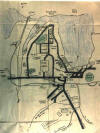
Barth Map - showing locations of labor camp, rail
station, arch, town square, airport and runways. |
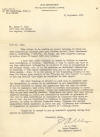
USA Missing in Action Letter |
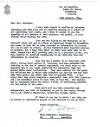
RAF Missing in Action Letter |

Prisoner of War telegram |
|
| |
|
| |
|
|
| |
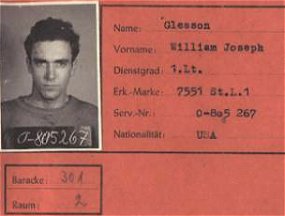
Stalag Luft I ID card |
|
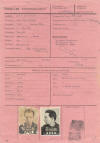
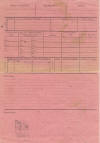
Dulag Luft ID card |
|
| |
|
| |
|
|
| |
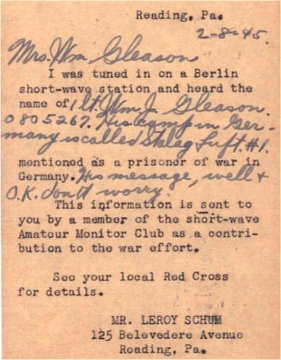 |
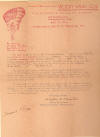
Victory Radio Club - War Prisoner Message Bureau. |

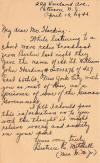 |
|
| |
During WWII the German propaganda machine was inclined to beam short
wave radio transmissions to the United States. In order to attract
listeners, the programs were interspersed with lists of Americans being
held in prison camps. Above are examples of mail sent to POW
families from the short wave radio listeners. |
|
| |
|
|
| |
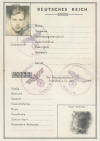

Forged German Identity Card, hand drawn in camp by
Roy Kilminster. Photo was taken with a camera that had been smuggled in. |

Forged Gate Pass from Roy Kilminster
|
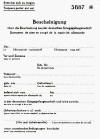
Forged leave pass for a French worker who had been
taken as a POW and forced to work in Germany.
From Roy Kilminster |
|
| |
|
|
| |
Kriegsgefangenenlager -
Postcards from Stalag Luft I
|
|
|
|
| |
Death Edict Poster altered by Col. Byerly
After the "Great Escape" from Stalag Luft III, this notice was posted in the
POW camps warning about trying to escape.
 |
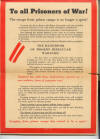 |
Altered Poster -
Col. Byerly
altered this one at Stalag Luft I with a "Buy War Bonds - V for Victory sign". |
Unaltered Poster |
|
|
| |
|
|
| |
Stalag Luft I Camp Orders
| German Administration Orders |
Prisoner Administration Orders |
German Kommandant
Memo to
Senior American Officer - June 1, 1944
German Kommandant Orders - April 27, 1944
German Kommandant Orders -
June 24, 1944
|
North Compound, Special Order 15 -
dated February 13, 1945
North Compound, Daily Bulletin
- dated July 9, 1944
North Compound,
Daily Bulleltin - February 26, 1945
North Compound Daily Bulleltin - March 31,
1945
North Compund 2, Daily Bulletin - April 18,
1945
South Compound - Order from the Senior
British Officer - April 17, 1944
Special Notice to POWs
after Liberation
Special Order # 5 -
Post Regulations dated May 3, 1944
|
|
|
| |
|
|
| |
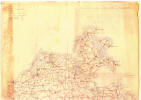
Homemade escape map made by Escape Committee |
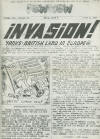
The
Secret Camp Newspaper - Click here for more |
|
| |
|
| |
|
|
| |
|
|
| |
|
|
| |
German issued Stalag Luft I Dog Tag
belonging to a Clovs V Johnson.
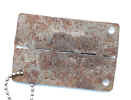
This was given to me by a man I purchased
a book about Stalag Luft I from.
When he sent the book to me he enclosed
this and said he thought it was a tag that they put on furniture!
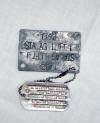
John A. Barrett's German and American Dog Tags |
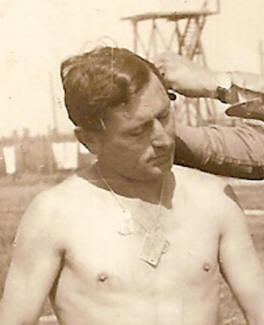 |
|
| |
|
POW wearing his Stalag Luft I German dog
tags |
|
| |
|
|
| |
U. S. Military Intelligence Service, War Department
Report on Stalag Luft I
1st Report - Prepared 15 July, 1944
This document gives a detail description of the strength,
treatment, food, clothing, health, religious activities, German personnel,
mail, recreation, etc. at the camp.
Click on thumbnails to view full size and/or print.






|
|
| |
2nd Report - Prepared 1 November, 1945






Click on thumbnails above to view full size and/or print
or
click here
to read full
report online. |
|
| |
|
|
| |
Instructions for Officers and Men of the Eighth Air Force
in the Event of Capture
This document was issued to prepare the men to deal with the enemy's
interrogation. It instructs them what information should be given,
what they will try to find out from them, how they will try to obtain
information from them, and how they can defeat the enemy.
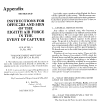
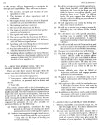
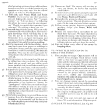
|
|
| |
|
|
| |
Nazi Camp Held Galaxy of U.S. Aces
by Andy Rooney
Zemke, Gabreski among Yank Fliers found at Barth
The greatest collection of American air aces ever
assembled sat, some of them for a year and a half, in Stalag Luft I, the
German prison camp at Barth on the Baltic before they were freed....
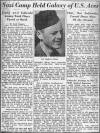
|
|
| |
|
|
| |
A Speech Worth Dying For
by C. B. Glines printed in the October 1995 issue of Air Force Magazine
The Germans condemned him to death for "inciting a riot" but Col. Henry
Spicer's words gave his fellow POW's strength and fortitude.
Col
Spicer was 1 day away from his execution date when the Russians liberated
the camp. Many POWs I have met have told me about Col. Spicer
and his speech.
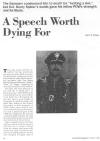
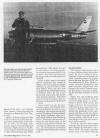
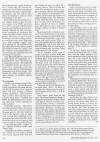
Click
here to read the article on line.
Click here to read his notes to a fellow POW
while awaiting his execution and his subsequent interview by US government
concerning his speech.
|
|
| |
|
|
| |
RAMP ( Recovered Allied Military Personnel )
Advice
Surgeon's Bulletin issued at Camp Lucky Strike
Advice issued to the newly freed Prisoners of War concerning the
effects of the prolonged starvation to their digestive system and what to do to
help their bodies recover properly.
(Compliments of Marvin Laufer - Stalag Luft I POW)
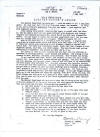
|
|
| |
|
|
| |

Map of German POW
camps
|
|
| |
|
|
| |
Black Bread Broat Recipe - The official recipe for the bread that when
available was served to the prisoners.

| Cooking directions were not included. No oven
temperatures, no cooking time, no instructions on mixing the “dough”
and letting it rise. You are assumed to know. One might
“assume” the grain was sufficiently “rotten” to provide gases that
would allow the bread to rise and the pieces of sugar beets would
provide “sugar” to “feed” the yeasty rye.
The pieces of sugar beets were most likely pressed
remnants of beet, not real slices. More than likely whoever was
preparing the bread for baking just dumped out the dough, slapped it
around and created loaves. It should be told that the closer to the
end of the war the greater the proportion of leaves and straw in the
mix. A loaf weighed 3 1/2 to 4 pounds and had to be seasoned at
least three days before it was at all edible. It is said that the
stench rising from the bread robbed many a POW of his appetite. |
|
|
| |
|
|
| |
Envelope containing secret orders
- Most of the time the airmen did not know their destination when departing
the US. They were given envelopes like the one below with instructions not
to open it until they were in the air for one hour. This is the envelope that
our Dad received in Bangor, Maine before he boarded the plane to go overseas.
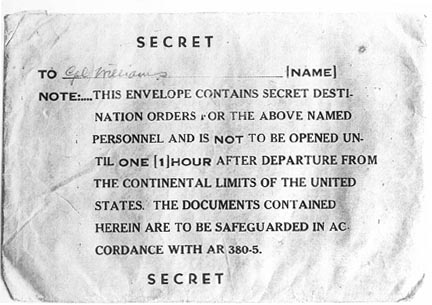
|
|
| |
|
|
| |
Prisoners of War Bulletin -
Published by the American National Red Cross for the Relatives of
American Prisoners of War and Civilian Internees - December 1944.
From the collection of Mark Kleinhanz.







 



|
|
| |
|
|
| |
Bail out procedure for a B-17
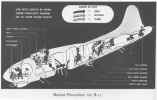
|
|
| |
|
|
| |
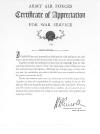
|
ARMY AIR FORCES
Certificate of Appreciation
FOR WAR SERVICE
TO
Aaron Kuptsow
I cannot meet you personally to thank you
for a job well done; nor can I hope to put in written words the great hope I
have for your success in life.
Together we built the striking force that swept the
Luftwaffe from the skies and broke the German power to resist. The
total might of that striking force was then unleashed upon the Japanese.
Although you no longer play an active military part, the contribution you
made to the Air Forces was essential in making us the greatest team in the
world.
The ties that bound us under stress of combat must not
be broken in peacetime. Together we share the responsibility of
guarding our country in the air. We who stay will never forget the
part you have played while in uniform. We know you will continue to
play a comparable role as a civilian. As our ways part, let us wish
you God speed and the best of luck on your road in life. Our gratitude
and respect go with you.
(signed H. Arnold)
Commanding General
Army Air Forces |
|
|
| |
|
|
| |
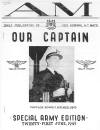 |
The Daily Newsletter of the U.S.S. Admiral H. T. Mayo - one of the Liberty troopships carrying the newly freed Prisoners
of War back to the United States - dated June 21, 1945.
Click here to read their 8
page newsletter containing the ship's crews thoughts on their passengers, the
POWs thoughts, cartoons, and more.. Very interesting.
|
|
| |
|
|
| |
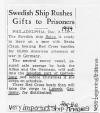 |
Swedish Ship Rushes Gifts to Prisoners - December 2, 1944 |
|
| |
|
|
| |
 |
Honorable service card |
|
| |
|
|
| |
Facts
BOMBERS: THEN & NOW
Then (1945) the existing bomber force consisted of 2,374 very heavy
bombers (B-29), 12,221 heavy bombers (B-17 & B-24), 5,578 medium bombers
(B-25 & B-26) and 3,063 light bombers (A-20 & A-26).
At present, the planned bomber force includes 181 bombers: sixty-six
B-52Hs, ninety-five B-1Bs and twenty B-2s.
B-17's:
B-17's often called "The Flying Fortress" is one of the most
famous airplanes ever built. The B-17 prototype first flew July 28, 1935. Few
B-17s were in service on Dec. 7, 1941, but production quickly accelerated.
The aircraft served in every World War II combat zone, but is best known
for daylight strategic bombing of German industrial targets. Production ended in
May 1945, and totaled 12,726.
Specifications
Wing Span: 103 feet, 10 inches
Length: 74 feet, 4 inches
Height: 19 feet, 1 inches
Weight: 55,000 pounds loaded
Armament: Thirteen .50-caliber machine guns with normal bomb load of 6,000
pounds
Engines: Four Wright "Cyclone" R-1820s of 1,200 horsepower each
Cost: $276,000
Performance
Maximum speed: 300 mph.
Cruising speed: 170 mph.
Range: 1,850 miles
Service Ceiling: 35,000 feet .
|
|
| |
